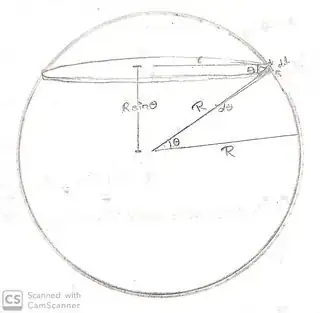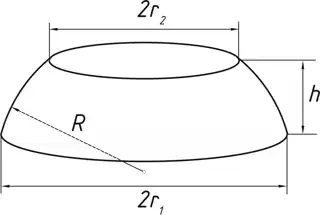Why do we take thickness be differential of distance apart of elemental mass when calculating volume and be differential length of arc when calculating area of the sphere when integrating in terms of angle.
Before going into depth I refer this thread first.
So what I learnt is that when getting small volume we take $$dl = d(R\sin θ) = R\cos θ\cdot dθ <<$$ $$r = R\cosθ$$ $$dV = πr^2\cdot dl$$
While when calculating area we take $dl$, $$dθ = \frac{dl}{R}$$ $$dl = R\cdot dθ <<$$ $$dA = 2πr\cdot dl$$
But like why different elemental thickness ($dl$) for those calculations?
If I wasn't able to make you understand what I said, then see the second figure, the $h$ is taken as $dl$ in calculation of volume while the curved-surface is used as $dl$ for calculation of area
My Question is: WHY

